INUKJUAK, Quebec (RNS) — Outside, on the banks of a chilly river flowing into the blue-black waters of Hudson Bay, it was only 10 degrees.
Inside St. Thomas Anglican Church, in the northern Canadian hamlet of Inukjuak, about 70 people were gathered — one of them an imposing, 6-foot-1 man with a thatch of white hair, a full beard and the long, sweeping red, black and white robes of an Anglican bishop.
Bishop David Parsons, holding up a red paper heart to signify the blood of Jesus, a black one to signify sin, a Bible and a flashlight, said: “This Bible is a light to show us where to go. For 12 years, I’ve worn the robes of a bishop. The robes remind me that I am a sinner.”
Parsons had recently turned 70, the mandatory retirement age in the Anglican Church of Canada, and was taking a farewell tour after a dozen years heading the Diocese of the Arctic. Covering Canada’s northern third, it is the largest Anglican diocese (by area) in the world. Inukjuak, population 1,821, is in Nunavik, a region at the diocese’s far eastern end in the remote northern reaches of Quebec.
Translating for Parsons was his predecessor and mentor, Andrew Atagotaaluk. Wiry and compact, with bushy eyebrows and silvery-black hair, and standing almost a foot shorter than Parsons, Atagotaaluk was the diocese’s first Inuit bishop and one of four translators of the first Inuktituk-language Bible.
Together, the two bishops had created an evangelical outpost with 34,171 members and still growing amid the more liberal ACC that is dropping numbers so fast, the entire denomination may not last beyond 2040.
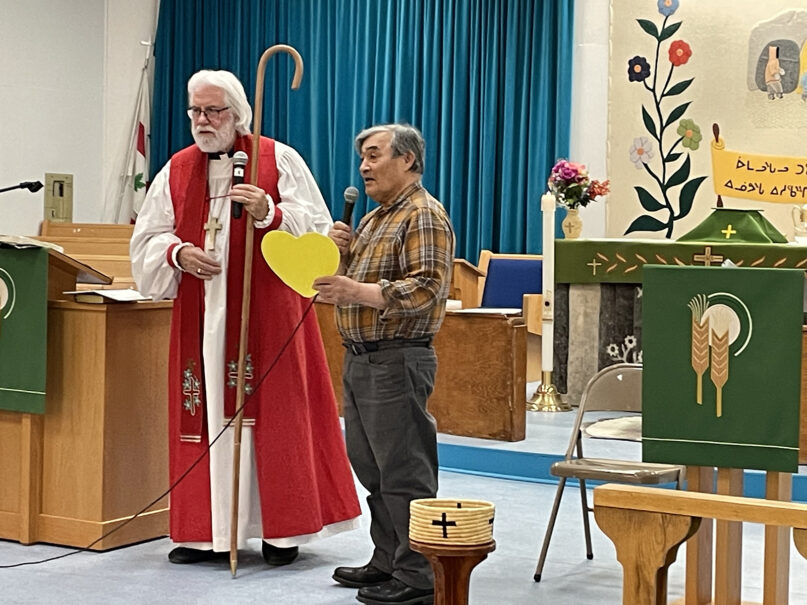
The diocese’s bishops have consistently voted throughout the years against same-sex unions, gender transition liturgies and other liberalizing trends in the ACC. “The South doesn’t want to support us because we’re too biblical,” the bishop mused. “We believe Jesus is Lord, we’re not interfaith and we don’t have the intelligence to run things on our own without the Holy Spirit.”
If its congregations are growing, however, Parsons’ successor, who will be elected May 9 in Edmonton, will grapple with the never-ending problem of how to attract priests to the Arctic. Only 16 full-time clergy serve the diocese’s 49 parishes, recruited from around the world to serve in 13 hamlets ranging from Kugluktuk to Kuujjuaq. Parsons has used a patchwork of retired clergy, deacons and laity to lead another two dozen churches, leaving 10 parishes with no clergy or lay leader.
Meanwhile, climate change, geopolitics and tourism bring the world farther north every year. The Anglicans, who have been in the region since the late 17th century, and the Catholics, who’ve been there a century, are seeing a bit of competition. Jehovah’s Witnesses and Muslims have established footholds in the Arctic, and independent Baptists and Seventh-day Adventists have also moved in.
To meet that challenge means a constant search for new blood, which is tremendously draining. The onetime corps of missionary Anglican clergy from the U.K. eager to minister in the Arctic no longer exists. Many non-Inuit clergy leave after a few years due to the isolation of the Arctic and easier career opportunities elsewhere.
Add to this the simple wear and tear on the body from constant travel in subzero cold. Born in Labrador, Parsons is used to living up north, but his first post as a lay minister in 1989 in Aklavik was truly remote. Only reachable by plane or ice road, the village, near the Alaskan border, was a trading post for the Hudson Bay Co. and the site of the diocese’s first cathedral.
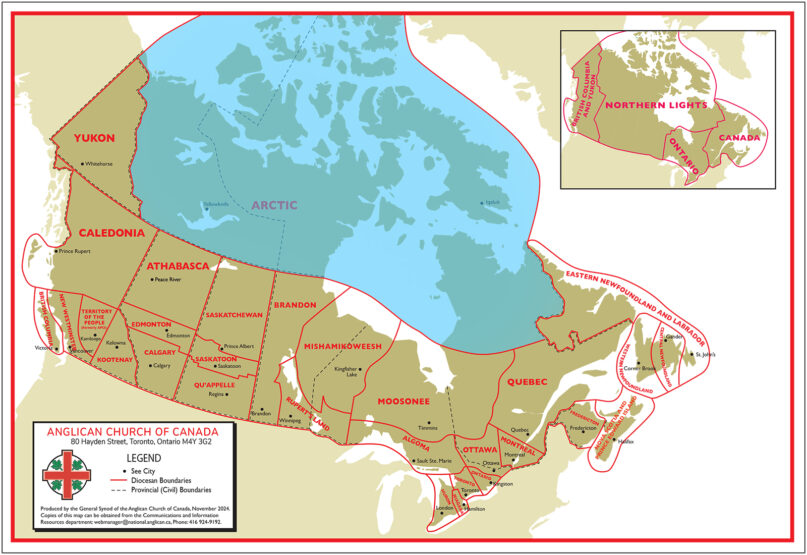
Parsons adored his four years there, he said, as there were several clergy within a day’s journey to mentor him. “It was like a party for me,” he said. “I thought I’d died and gone to heaven. These were high-caliber people who treated me if I were one of them.”
One of them, Atagotaaluk, ordained him and sent Parsons to head a parish in Inuvik, a town on the Mackenzie River Delta near the Arctic Ocean. Parsons served happily there until Atagotaaluk announced his retirement in 2012, and Parsons was nominated to replace him. Parsons dithered on whether to keep his name on the ballot.
“Dad,” said Davey Parsons, the bishop’s youngest son, then 30, “how long are you going to run away from everything?”
Parsons’ name stayed. He was elected after several ballots. “The next morning,” he remembered, “a member of the Nunavut government asked me what I was going to do about all the suicides.”
In 2012, after he prayed about how to answer the government official’s question, he realized the key was hiring a youth coordinator for the at-risk teenagers dying by suicide. He hired one and got a $45,000 grant to help train parish leaders in suicide prevention. Then COVID-19 hit. Meanwhile, the youth coordinator married, got pregnant and quit.
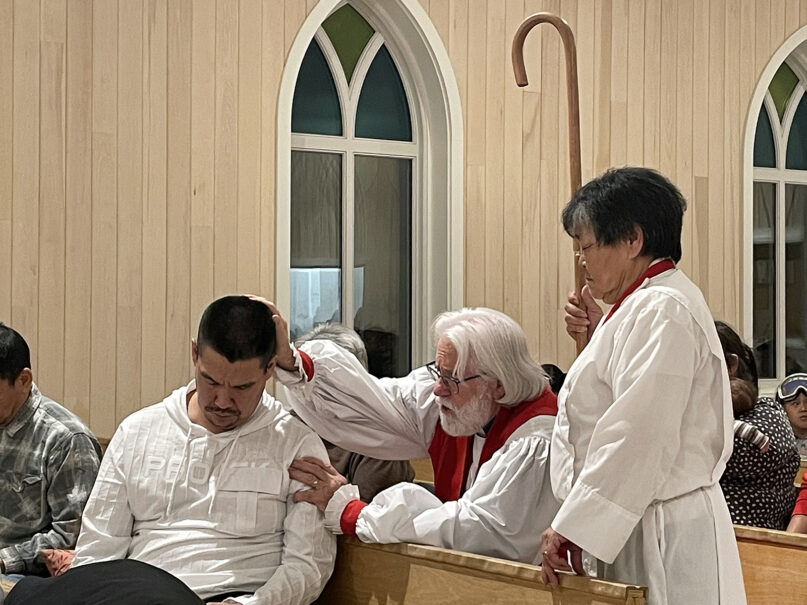
The question of suicide came up at the bishop’s next stop, in Puvirnituq, the largest town on Hudson Bay’s eastern coast and home of the new $4 million (Canadian) St. Matthew’s Anglican Church. Its priest, Esau Tatatoapik, and his wife, Mary, a deacon, met him at the airport and took him to their home beneath skies green with the northern lights.
Just before Parsons’ plane pulled in, the couple had presided at a funeral for a woman who’d been killed by her drunken grandson. Esau averages three funerals a month, but this past week he’d had four. Parsons asked what was killing everyone, and the couple — along with their youth group leaders — responded that the causes were alcohol-related, drug overdoses or cancer.
“Mary and I are so tired,” the priest said. “There have been so many funerals. So many of the clergy have had suicides.”
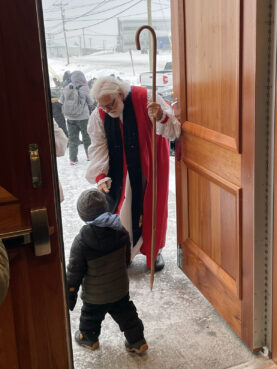
Parsons had been going all day, but somehow, he had to encourage this dispirited group. “I am soon going to be gone,” he said. “It will be you guys who will need to look for an answer. We need to get people in their 20s. We need to empower a crowd of teenagers. Instead of killing themselves, they need to come alongside each other and build each other up.”
He repeated a prophecy that Anglicans across the north have talked about for years: Through the Arctic, God will revive the South. There have been prophets among their own people, he said, that have said the dying southern half of the Canadian church will be awoken by a resurgent, evangelical, spiritually powerful North.
He repeated this message at an evening confirmation service whose Pentecostal-style hymns were led by a six-piece band. Parsons asked the youthful crowd of 70 how many teens were present without their parents. At least 10 raised their hands.
“Where are the elders?” he asked. “They are home drunk … with busyness.”
His 40-minute sermon reassured his listeners they have a destiny despite their remote locale. “God wants to send the people of the North to the whole world.”
The irony was maddening; here he had plenty of people but not enough leaders, while dioceses in the South have plenty of clergy, but no people.
The next day, Parsons was off for Ivujivik, a scenic village in a tiny fjord off Digges Sound, at the very northern tip of Quebec. The local priest, Peter Ainalik, who would turn 80 in a few days, was one of the men Parsons has talked out of retirement to staff the tiny St. Columba Anglican Church. He met with Parsons for several hours before the service to pray and reminisce.
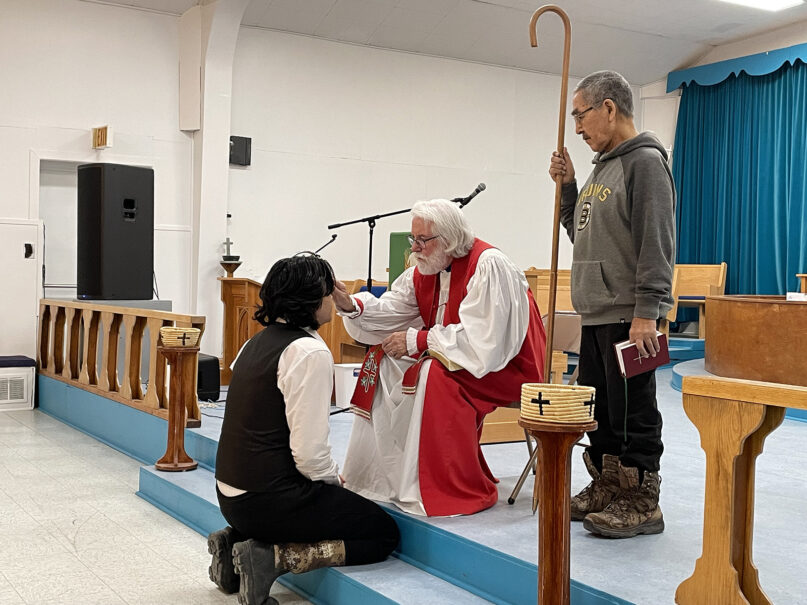
Ainalik told the bishop that church members wanted a prayer time for all the suicides in town. Thirty-two people — mostly women — made their way through the falling snow for an evening service where one person was confirmed. When Parsons invited people up for prayer afterward, the floodgates burst open. A petite dark-haired woman named Piellie asked for prayer for a broken heart: Her 32-year-old son, Lucassie, died by suicide the year before, she said between sobs. Many others wept as well.
“Some of them cannot heal after suicide,” Parsons reflected afterward. “So many young people are doing it. Many have been lost. It’s hard to find the answer why.”
The next day, Ainalik, engulfed in a mustard-yellow parka, saw Parsons off at the tiny airport. The priest and the bishop shook hands.
“See you in heaven,” Parsons said.

Original Source:
https://religionnews.com/2025/04/02/a-bishop-of-the-arctic-says-goodbye/